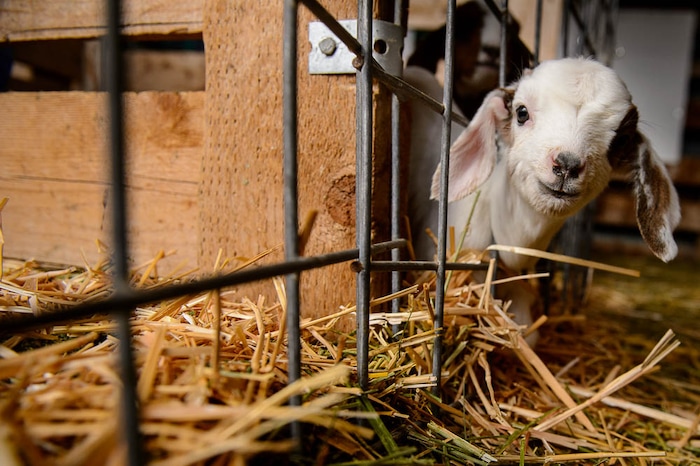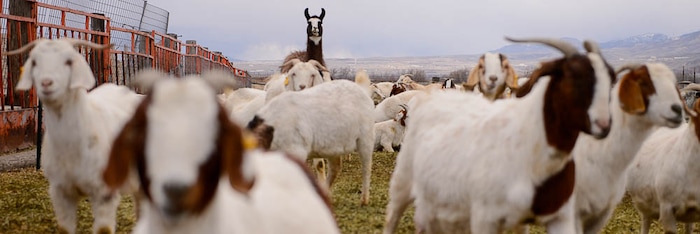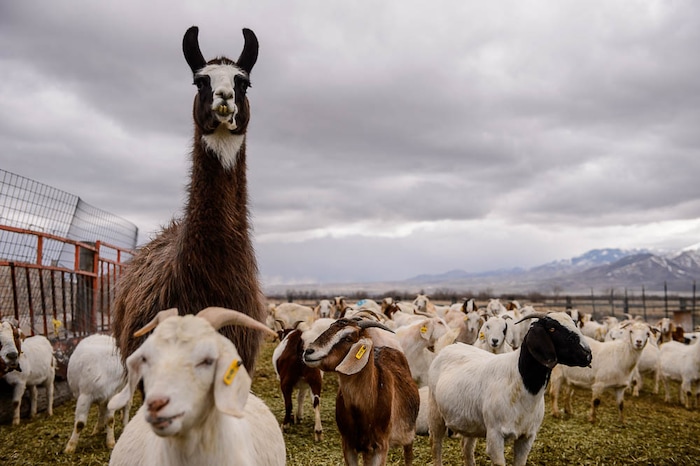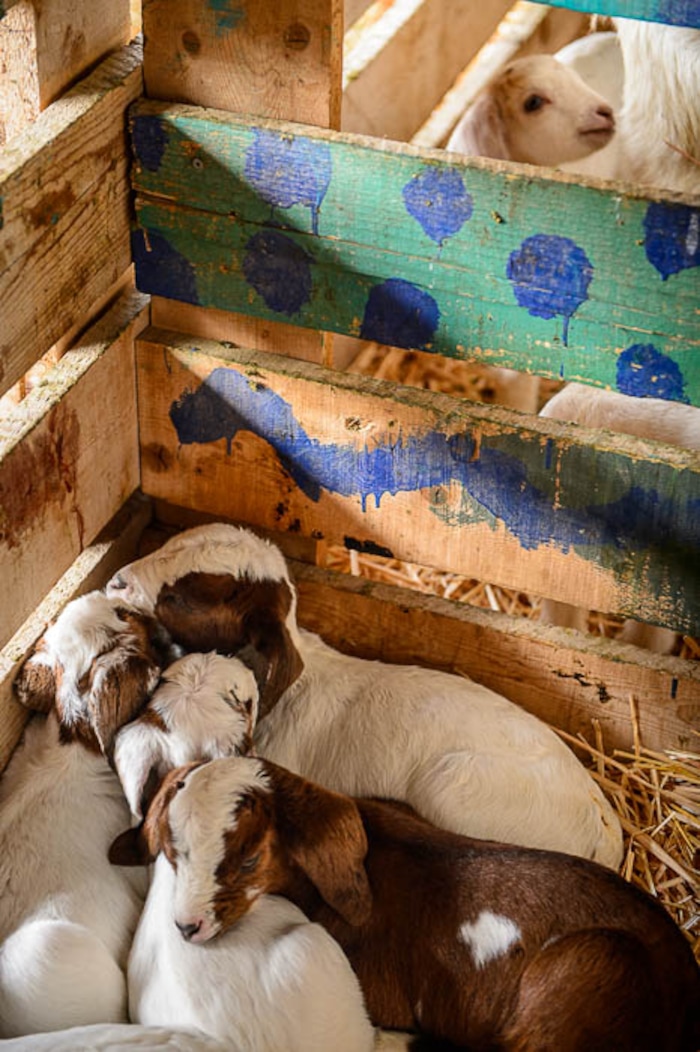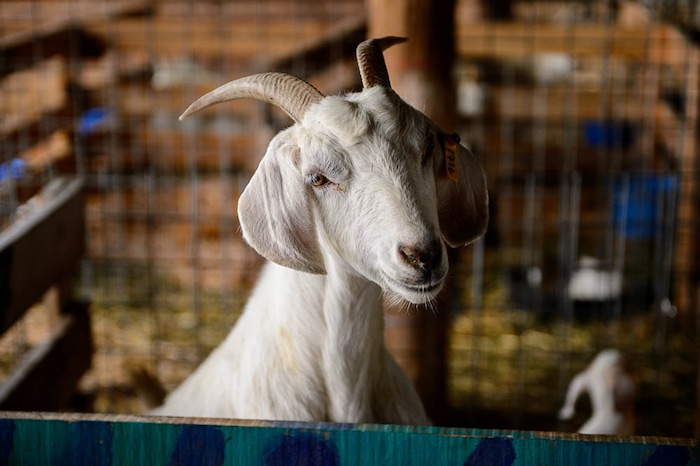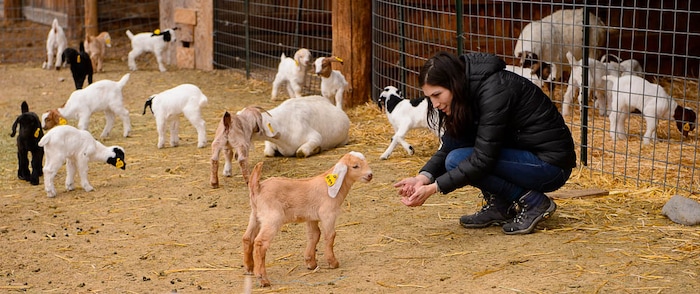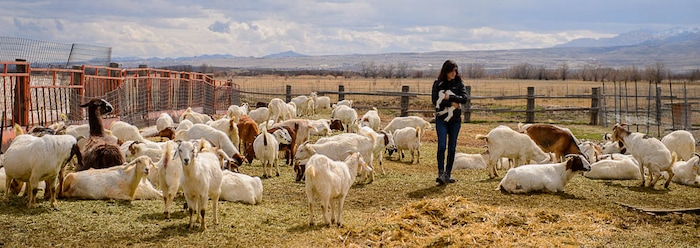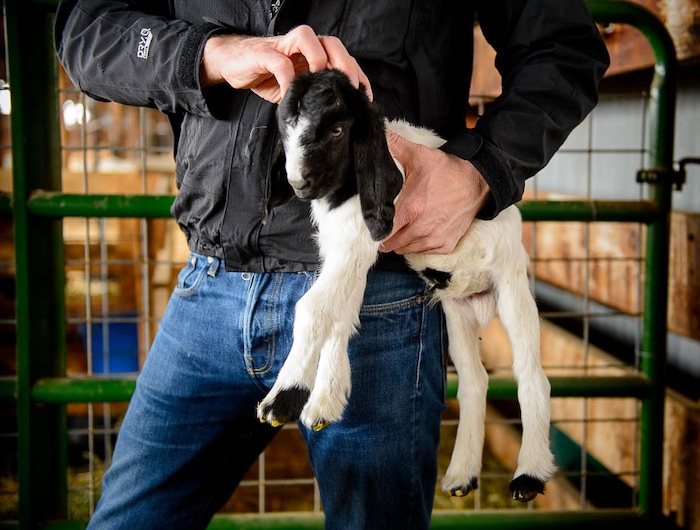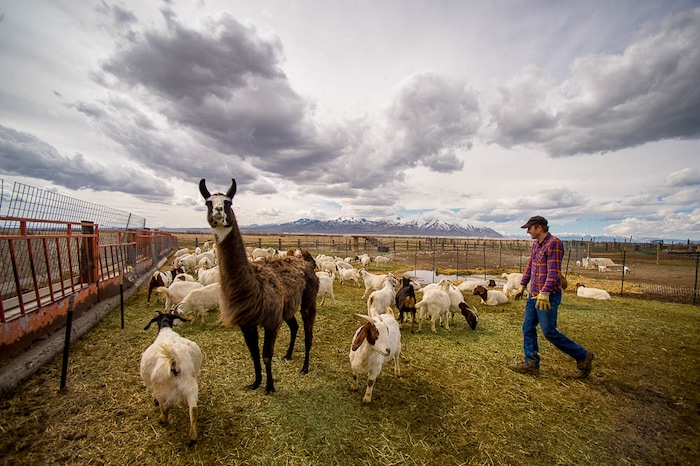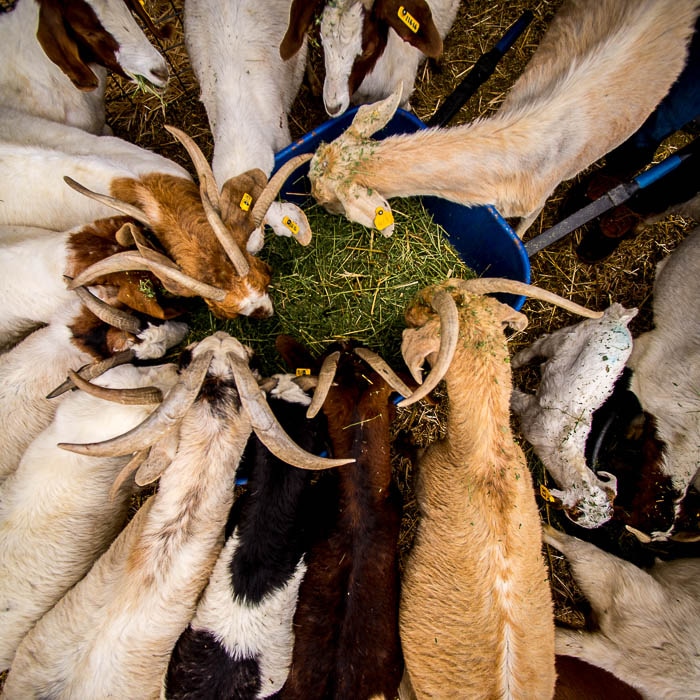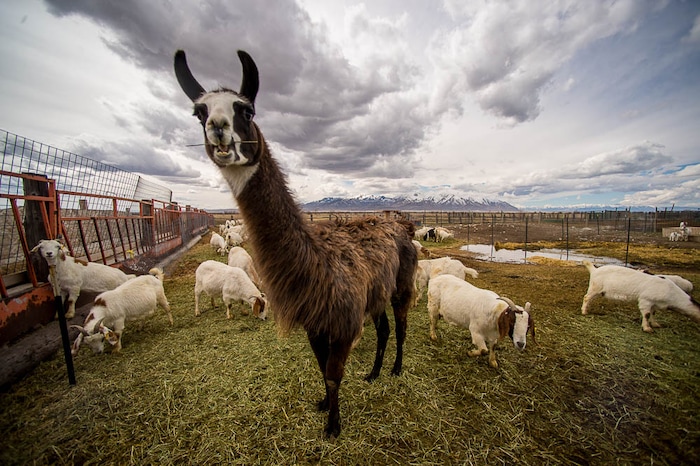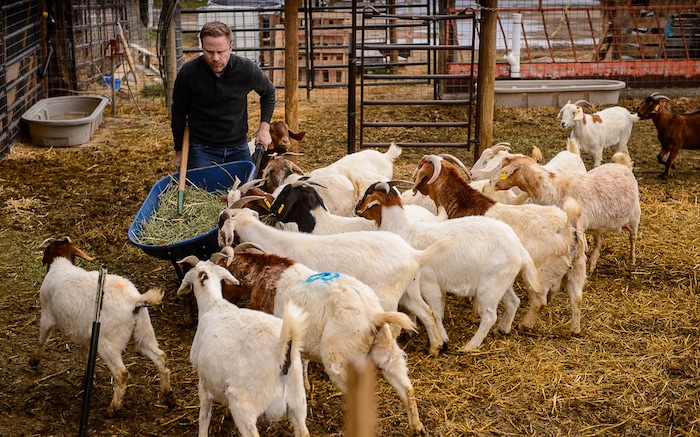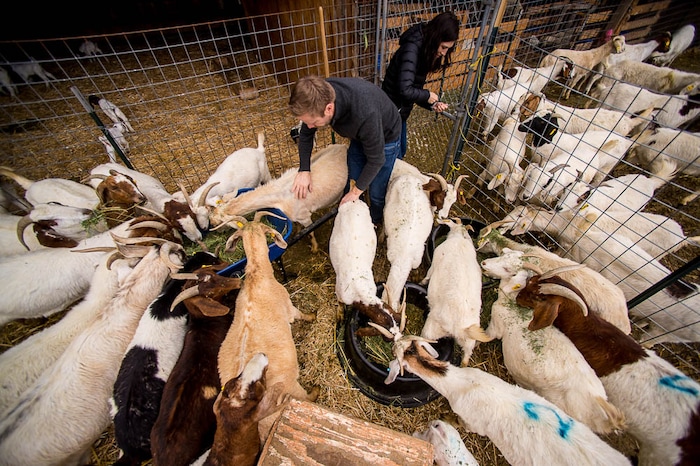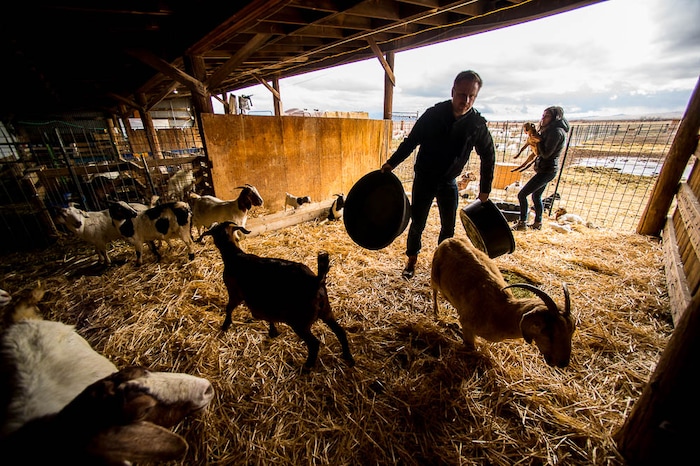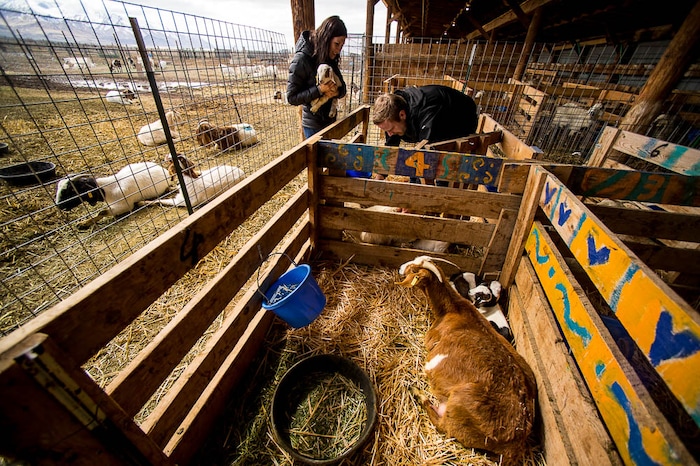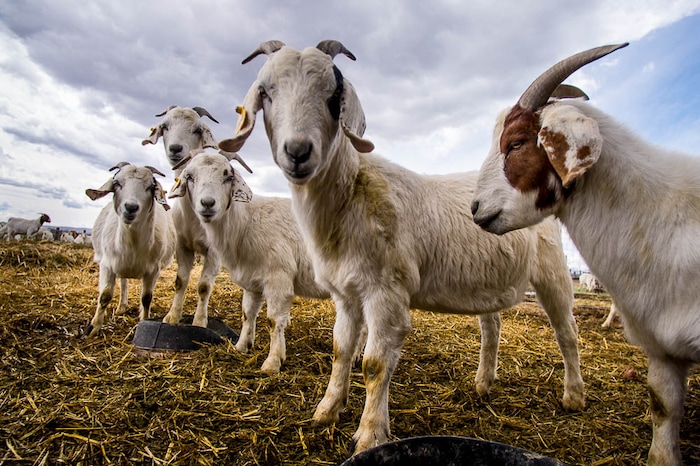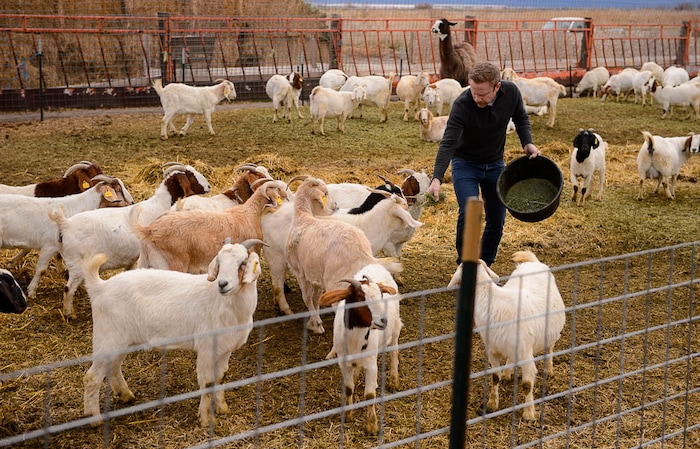A baby boom is underway at Salt Lake City’s East African Refugee Goat Project.
About 100 kids have been born since mid-March on the scenic ranch 8 miles west of Salt Lake City International Airport. An additional 120 are expected to arrive in the coming weeks.
Each new member of the herd is welcomed into the world by a volunteer “kid sitter” who — just like a maternity ward nurse — keeps watch over the pregnant does as they prepare to deliver and then makes sure the new kids are washed, fed and cuddled.
“By ourselves, we couldn’t do this,” said refugee Ismael Mohamed, as two white and brown kids leapt and played at his feet. “Where we are is because of the volunteers.”
The herd of mostly Boer goats is a source of affordable, high-quality meat for the more than 7,000 refugees from Somali Bajuni, Burundi and Somali Bantu who live along the Wasatch Front, said Mohamed.
(Trent Nelson | The Salt Lake Tribune) Volunteers Tristan Horne and Sabrina Martinez make sure the goats have food at water Saturday March 24, 2018.
The protein that the refugees were accustomed to eating in their homeland was difficult or expensive to find in Utah, he said, mainly because it must be processed in the proper halal manner, required by those of the Muslim faith.
To solve the problem, the three refugee communities came together in 2013 — with the help of the International Rescue Committee of Utah — and started the herd with about 40 goats. By 2017, the herd had grown to about 250; once the kidding season ends in 2018, it will be nearing 500.
Processing the meat and selling it to other refugees bring in income, as do grazing fees, said Mohamed. Large landowners rent portions of the herd to clear overgrowth and noxious weeds and, in the process, prevent field fires. Profits go into a scholarship fund.
The refugees pay an employee — a fellow refugee with animal husbandry experience — to maintain the herd during the week, while refugee families pitch in on the weekends to ensure the animals have food and water, Mohamad said.
Carlos, a large llama, is there to protect the herd from predators, namely coyotes.
(Trent Nelson | The Salt Lake Tribune) Carlos the llama protects the animals of the The East Africa Refugee Goat Project, from predators — namely coyotes. Saturday March 24, 2018.
In the spring, when the pregnant does are ready to deliver, the refugees need extra help at the kidding pens on secluded land accessible only by partially paved dirt roads, but with a view of the city to the east and the Oquirrh Mountains to the south.
This year, the IRC recruited about 100 volunteers to fill the two-hour shifts, which run from 6 a.m. to 10 p.m. daily, said program manager Josh Lloyd.
Refugees help when they can, but many have labor jobs — sometimes more than one — and “are barely making ends meet,” said Lloyd, and can’t leave work to ensure that the kidding process goes smoothly.
That’s where the volunteers, like June Hiatt of Salt Lake City, come in.
Hiatt was a U.S. Peace Corps volunteer in Namibia for two years. After returning in 2015, she wanted to maintain her connection to the continent.
“I wanted the refugees that have come to Salt Lake City to feel as welcome as I felt when I went there,” she said.
Haitt was a “kid sitter” for the first time in 2017 and saw 12 new kids born. “It was an amazing experience,” she said. “I grew up in the city. So I never really interacted with agriculture in this way.”
She signed up again this year and brought along her friend Kathryn Jones-Porter.
“I like the idea of being a goat doula,” said Jones-Porter, who photographs human births for a living. “Making sure the quality of life is as high as possible for these animals.”
While 2018 is the fifth — and most successful — kidding season for the Refugee Goat Project, there is still uncertainty, Lloyd said, about how it might be affected by the new Inland Port Authority, established by the Utah Legislature and signed into law by Gov. Gary Herbert,.
The authority will oversee creation and development of a special trade zone in the city, where inbound and outbound overseas goods could be received and processed, bypassing coastal ports of entry. The goat ranch sits within the boundaries of the 38-square-mile development, on land that has been leased by Rio Tinto Kennecott Utah Copper.
In addition to that project, the Utah State Prison will be built directly west of the goat ranch. It is expected to change only the view, although the IRC hopes the project might include road improvements.
Before that happens, though, there are more kids to deliver and volunteers to train.
Kidding 101 • Weeks before the baby goats start arriving, volunteers participate in a Kidding 101 course, taught by professor Kim Chapman, with Utah State University Extension Services.
He explains everything from the stages of labor and delivery to how to tell if a kid is coming out headfirst or breech; and what to do when there are multiple births — because twins and triplets are common among goats.
For the most part, “it’s a natural process that takes care of itself,” Chapman assures the volunteers, “but if a doe has been in labor too long or it looks like a breech birth, that’s when you need to call in the cavalry.”
After a normal birth, volunteers get to work clipping the umbilical cord, cleaning the mucus from noses and mouths, and placing the babies near their mamas, who lick them clean, nurse and bond.
(Trent Nelson | The Salt Lake Tribune) Volunteer Sabrina Martinez plays with the kids at the East African Refugee Goat Farm, Saturday March 24, 2018.
Later, the volunteers move mother and baby into one of the small kidding pens, a sort of post-maternity ward where there is straw to sleep on as well as food and water.
This year, Lloyd said, the IRC has had to build twice as many pens to keep up with all the births.
After three days in the smaller pens, mother and kid(s) are moved to the larger mixing pen with all the other nursing mamas and kids.
Not all the mothers have survived childbirth, leaving about six orphans that need to be bottle-fed — a bittersweet job for the volunteers.
Lew and Laura Miller have volunteered since the inception of the project, and while they like to help the refugees become self-sufficient, they find a personal benefit as well.
“When you’re out here, you feel like you’re on another planet,” said Lew. “You can just hang out with the goats and kids and decompress. It’s a great reset for your day.”
